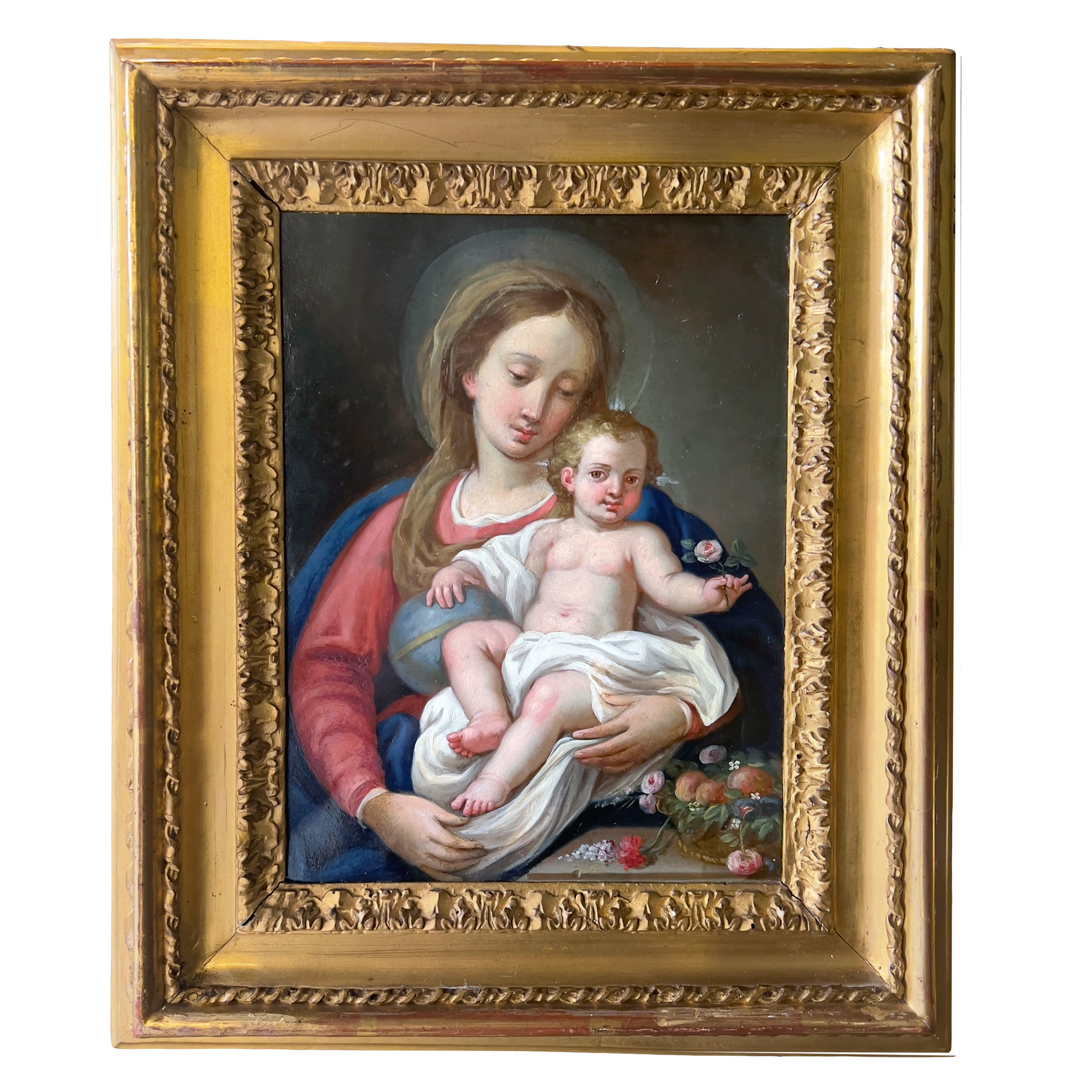 Image 1 of
Image 1 of


"Sunset by the ruins" by Hermann David Salomon Corrodi
Hermann David Salomon Corrodi (1844-1905): oil painting on canvas depicting the ruins of the Emperor Claudio's aqueduct near Rome, at sunset, within the original golden frame.
Signed: H. Corrodi Rome bottom left.
About 1870
Conditions: excellent commensurate with age, relined, light restorations in the sky.
Dimesions: cm. 100 x 80 ca.
Hermann Corrodi (Frascati, 26.7.1844 - Rome, 30.1.1905) He studied in Paris, Rome and England, where he followed Alma Tadema. He worked for many European courts, meeting their favors; in fact, his works were bought by the royal houses of Germany, France, Spain and Russia. He exhibited in various European cities and capitals, as well as at the 1900 Paris Universal Exhibition, and more often in Rome. Here he settled permanently after his father's death, although he had studied there since 1874 in via dei Greci 36, from 1880 in Via degli Incurabili 8, and from the early twentieth century in what were called the Corrodi Studies in Via Maria Cristina near the bridge Margherita, very popular with the artists of the time. Despite having maintained Swiss citizenship, he actively participated in the Roman artistic life, as a member of the International Artistic Association, of which he was vice-president in 1889 and 1890, and of the Amateurs and Cultori of Fine Arts, of which he was councilor in 1895. In 1899 he donated at the Accademia di San Luca the bronze bust of his father, the painter Salomon, who had been a partner. He was unanimously considered a good painter of landscapes, highly appreciated, especially those Roman and Lazio, for the breadth and depth of breath and for the luministic and atmospheric sensibility.
Hermann David Salomon Corrodi (1844-1905): oil painting on canvas depicting the ruins of the Emperor Claudio's aqueduct near Rome, at sunset, within the original golden frame.
Signed: H. Corrodi Rome bottom left.
About 1870
Conditions: excellent commensurate with age, relined, light restorations in the sky.
Dimesions: cm. 100 x 80 ca.
Hermann Corrodi (Frascati, 26.7.1844 - Rome, 30.1.1905) He studied in Paris, Rome and England, where he followed Alma Tadema. He worked for many European courts, meeting their favors; in fact, his works were bought by the royal houses of Germany, France, Spain and Russia. He exhibited in various European cities and capitals, as well as at the 1900 Paris Universal Exhibition, and more often in Rome. Here he settled permanently after his father's death, although he had studied there since 1874 in via dei Greci 36, from 1880 in Via degli Incurabili 8, and from the early twentieth century in what were called the Corrodi Studies in Via Maria Cristina near the bridge Margherita, very popular with the artists of the time. Despite having maintained Swiss citizenship, he actively participated in the Roman artistic life, as a member of the International Artistic Association, of which he was vice-president in 1889 and 1890, and of the Amateurs and Cultori of Fine Arts, of which he was councilor in 1895. In 1899 he donated at the Accademia di San Luca the bronze bust of his father, the painter Salomon, who had been a partner. He was unanimously considered a good painter of landscapes, highly appreciated, especially those Roman and Lazio, for the breadth and depth of breath and for the luministic and atmospheric sensibility.
Hermann David Salomon Corrodi (1844-1905): oil painting on canvas depicting the ruins of the Emperor Claudio's aqueduct near Rome, at sunset, within the original golden frame.
Signed: H. Corrodi Rome bottom left.
About 1870
Conditions: excellent commensurate with age, relined, light restorations in the sky.
Dimesions: cm. 100 x 80 ca.
Hermann Corrodi (Frascati, 26.7.1844 - Rome, 30.1.1905) He studied in Paris, Rome and England, where he followed Alma Tadema. He worked for many European courts, meeting their favors; in fact, his works were bought by the royal houses of Germany, France, Spain and Russia. He exhibited in various European cities and capitals, as well as at the 1900 Paris Universal Exhibition, and more often in Rome. Here he settled permanently after his father's death, although he had studied there since 1874 in via dei Greci 36, from 1880 in Via degli Incurabili 8, and from the early twentieth century in what were called the Corrodi Studies in Via Maria Cristina near the bridge Margherita, very popular with the artists of the time. Despite having maintained Swiss citizenship, he actively participated in the Roman artistic life, as a member of the International Artistic Association, of which he was vice-president in 1889 and 1890, and of the Amateurs and Cultori of Fine Arts, of which he was councilor in 1895. In 1899 he donated at the Accademia di San Luca the bronze bust of his father, the painter Salomon, who had been a partner. He was unanimously considered a good painter of landscapes, highly appreciated, especially those Roman and Lazio, for the breadth and depth of breath and for the luministic and atmospheric sensibility.







